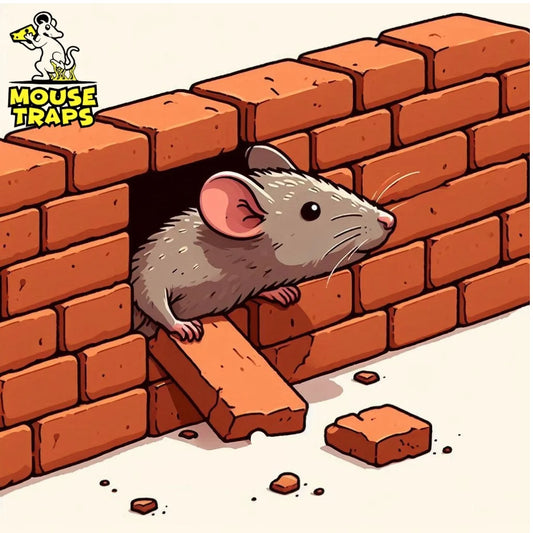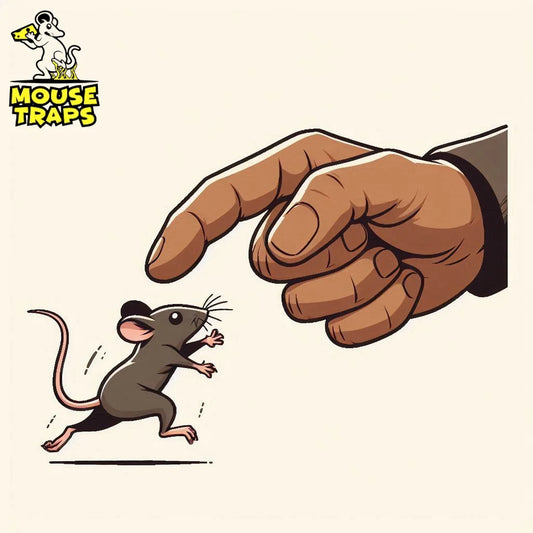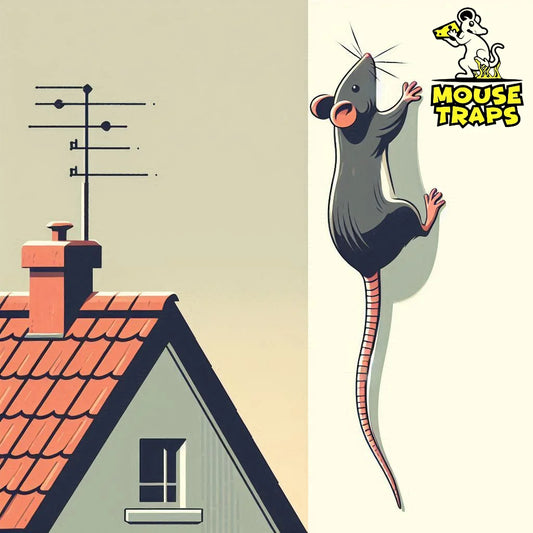Introduction:
When dealing with mouse problems at home it's important to address the issue especially when kids are around. Here are some key safety measures to keep in mind when using traps or poisons, in households, with children;
1. Keep out of reach:
- It's crucial to place traps or poisons in areas inaccessible to children. This involves strategic placement, considering the height and agility of children. Avoid low surfaces or areas where children frequently play, and instead opt for higher surfaces or behind furniture where children are less likely to reach.
-

2. Secure placement:
- Traps or poisons must be securely placed to prevent accidental tipping over or spillage. Snap traps should be positioned on stable surfaces, and their trigger mechanisms should not be easily activated by accidental movements. Poisons should be contained in secure bait stations or containers that cannot be easily opened by children.

3. Use child-resistant traps:
- Look for traps with mechanisms that are difficult for children to open or tamper with. These mechanisms need skill or physical power to activate making it less likely for children to accidentally set them off.
4. Educate children:
- Take the time to educate children about the dangers of traps and poisons. Emphasize that these items are not toys and should not be touched or played with. Explain the importance of staying away from areas where traps or poisons are placed.

5. Supervision:
- Supervision is crucial when traps or poisons are present in the home. Make sure to watch over ones to avoid any accidental encounters, with traps or harmful substances. Intervene if children get too close to these areas.

6. Proper disposal:
- Dispose of dead rodents and unused poisons properly and promptly. Dead rodents should be removed from traps and disposed of in sealed bags in outdoor trash bins. Unused poisons should be stored securely or disposed of according to the manufacturer's instructions.
-

7. Wash hands:
- Encourage everyone in the household to wash their hands thoroughly after handling traps or coming into contact with areas where poisons have been placed. This reduces the risk of spreading harmful substances and accidental ingestion.

8. Monitor for signs of poisoning:
- Be vigilant for signs of poisoning in children, such as nausea, vomiting, or dizziness. Seek medical attention immediately if poisoning is suspected, and provide information about the type of poison and the child's symptoms to medical professionals.
9. Store safely:
- When not in use, store traps and poisons in their original packaging and in a secure location out of reach of children. Consider using locked cabinets or high shelves to prevent access by children.
Note:
As snap traps and mouse poison have a lot of drawbacks it'd be better if you use right technique while handling rodent. Live Humane Mouse Traps and Sticky Glue Traps can be more appropriate as they are non-toxic, cheap, reusable and non-harming to children and pets.
Live Traps:

Benefits:
- Humane: Live mouse traps offer a humane method of catching mice without harming them.
- Reusable: Many live traps are reusable, making them a cost-effective and environmentally friendly option.
- Safe: Live traps are safe to use around children and pets since they do not involve harmful chemicals or mechanisms.
- Easy Release: These traps allow for easy release of captured mice, typically far away from the home, reducing the risk of reinfestation.
- Non-Toxic: Live traps eliminate the need for toxic baits or poisons, making them a safer choice for households.
Method of Use:
- Placement: Place the live trap in areas where mouse activity is observed, such as along walls or near entry points. Ensure the trap is placed on a stable surface.
- Bait: Apply bait, such as peanut butter or cheese, to the trigger mechanism of the trap to attract mice.
- Setting: Set the trap according to the manufacturer's instructions, ensuring that it is properly primed and ready to catch mice.
- Check Regularly: Check the trap regularly to see if mice have been captured. Once a mouse is trapped, it's important to act promptly to release it to a safe location.
- Release: To release the mouse, take the trap to a suitable location far away from the home, ideally several miles, and release the mouse gently.
Sticky Glue Traps:

Benefits:
- Non-Toxic: Sticky glue traps are non-toxic and do not involve the use of chemicals or poisons.
- Easy to Use: These traps are simple to set up and require minimal maintenance.
- Effective: Sticky glue traps can capture multiple mice at once, making them efficient for dealing with infestations.
- Safe: Sticky glue traps are safe to use around children and pets, as long as they are placed out of reach.
- Visibility: The transparent design of some sticky glue traps allows for easy monitoring of trapped mice.
Method of Use:
- Placement: Place the sticky glue traps in areas of high mouse activity, such as along walls or near food sources. Ensure the traps are placed in locations where children and pets cannot access them.
- Bait (Optional): While not necessary, bait such as peanut butter or dried fruit can be placed in the center of the trap to attract mice.
- Set Up: Peel off the protective covering from the sticky surface of the trap to expose the adhesive.
- Check Regularly: Check the traps regularly to see if mice have been captured. Replace the traps as needed.
- Dispose of Trapped Mice: Once mice are trapped, carefully remove the trap and dispose of it in a sealed bag in an outdoor trash bin to prevent the spread of disease.
Conclusion:
By following these safety measures families can successfully address pest issues while keeping children safe. When these guidelines are put into practice it guarantees a setting, for kids. Brings peace of mind to caregivers.




